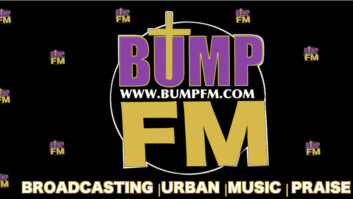The application of NEC programs
Mar 1, 2009 12:00 PM, By John Battison, P.E., technical editor, RF
The Numerical Electromagnetics Code (NEC) is probably the origin of one of the engineering mathematician’s most popular computer programs. It seems to be the culmination of most of the attempts to develop a universal use, directional AM antenna modeling and designing tool.
It’s now about 80 or more years since directional AM antennas were first being designed and built. The FCC probably had not previously considered the need for directional antennas in the then-rather-new, AM broadcast service. In the early 1930s a dedicated broadcast engineer filed an application with the FCC for an AM station in the medium wave AM service which would use a directional antenna to avoid interference to a co-channel station. In those days the involved and somewhat tedious calculations were performed on a �simple� slide rule, and only a few brave radio engineers even contemplated their widespread use.
As AM directional antenna design advanced and mechanical aids in the performance of mathematical calculations were developed, large and rather cumbersome devices known as comptometers were developed to help speed up the solution of directional antenna design problems. The Burroughs comptometer is the one I remember best, and that plus a well-used slide rule remained the major tools of most consulting engineers for a considerable time. In those days the FCC required all applications to use directional antenna systems including complete information on the formulae and equations used as well as a sample calculation. The Commission’s engineers in turn had to work through the equations and data contained in Form 301 to satisfy themselves that the promised interference-free service would be produced.

From the mid-1950s onward, computers were beginning to develop and appear on the market. By the 1980s, companies such as Dataworld began to offer services and programs, based on computer operations. These programs produced the desired directional antenna patterns and provided the requisite protection factors for all the stations involved. Soon after this it became possible to purchase patented computer programs for use by individual engineers. As a result, the use of directional antennas in the AM band greatly increased and after a while the reasons for some shortcomings in the design of some of the older directional antennas became apparent.
Finding specs
Without intending any criticism of the earlier directional antenna designs it should be noted that the work was onerous and somewhat repetitive. Quite frequently it took many weeks to find a directional antenna design that met all the specification requirements. Some assumptions had to be made and constants developed to fit the antenna operating specifications concerning horizontal radiation limits, azimuths and vertical radiation limits and angles. Relieved by finding a working answer, the engineer might accept a solution without checking all the possible drawbacks such as negative towers, unworkable or unstable base operating impedances, unfavorable mutual values and other RF problems. In extreme cases it might eventually turn out to be embarrassingly clear that the design was unworkable. Fortunately, where perhaps a less-than-perfect design had been built, such imperfections might not show up until much later in the life of the antenna system when more precise operating parameter requirements could not be achieved. Usually it was possible to make design corrections using new computer programs. These new programs made it possible to run enough iterations of a given situation with many minor changes until the best solution was found.
As computer usage increased, computer programs for modeling directional and non-directional antennas made their appearance. It was necessary to make many assumptions; for instance, it is usual to assume sinusoidal current distribution in an antenna. We now know that this is not always the case, and work has continued making allowances for non-sinusoidal current distribution. A great deal of work has been done on �antenna modeling� in an effort to decrease the number of assumptions that have to be made in the design of a directional antenna so that performance can be predicted with far greater accuracy. Such accuracy very recently resulted in a profound change in the FCC’s Rules defining directional antenna proof of performance.
Some of the work done in developing computer modeling is in the public domain, other programs are available on payment of a user fee or license. The Lawrence Livermore National Laboratories has been the forerunner in the developmental search for a convenient, accurate and available tool.
The application of NEC programs
Mar 1, 2009 12:00 PM, By John Battison, P.E., technical editor, RF
A program known as NEC-2 (Numerical Electromagnetics Code-2 ) was developed by Messrs. A. Poggio and G. Ruggles in the early 1980s. It was an excellent tool and it became available in the public domain, although it was not designed specifically for broadcast directional antenna design use. It formed the foundation for many variations that are used for broadcast directional antenna design. A book entitled Basic NEC with Broadcast Applications was written recently by J. L. Smith, PE. It takes the reader through the application of NEC-2 and shows working examples of directional antenna design. It also provides interesting examples, and extremely useful, easily available, essential design and operating information. Several typical and necessary pieces of information are easily extracted when using this program.
When making the required non-directional measurements on a directional antenna, the unused antennas in a multi-tower array are usually either grounded or left open depending on the tower height. Short towers were usually left floating and taller towers shorted to ground. This was generally reasonably satisfactory, although as the number of towers in an array increases, the effects of reradiated energy can cause bad distortion of the nondirectional pattern. This has sometimes become a time-consuming part of a proof. One of the advantages of using NEC-2 is what amounts to an invitation to model the effects on the non-directional pattern with the ability to nullify their effects. The recently approved FCC rules concerning directional antenna design and proof of performance depend vary greatly on the NEC products.
The program used by the FCC when dealing with AM directional antennas is the NEC 4-1 which was designed specifically for modeling and designing directional antennas. This program allows the engineer to model, and thus observe the effect of almost any design modification he wishes. Generally speaking, a change in a single tower’s operating parameters can cause a significant change in the overall antenna pattern. The opportunity for instant and basically unlimited iteration makes this program an ideal tool for the consulting engineer.
The NEC programs offer a great improvement over the slide rule era when the sheer volume of manual operations involved tended to influence full and comprehensive searches for perfection.
E-mail Battison at[email protected].










